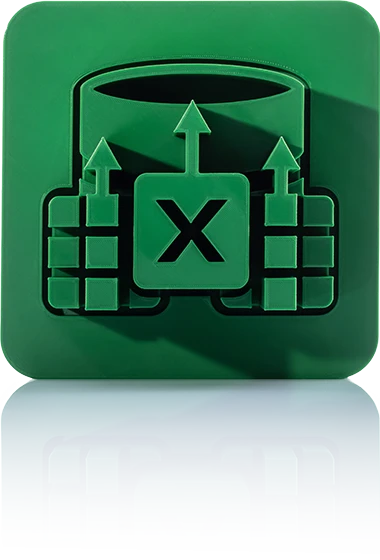Data Import Configurator
Simply Import Supplier Data
crossbase offers a graphical interface to analyze the structure of Excel and BMEcat files and to connect columns with database fields (import mapping). Transformation rules can be used for fully automatic transformations. These settings can be saved and reapplied to similar files.

Function Overview
Import of Excel files
Mass data import via Excel files is also possible for almost all data that is entered into the crossbase database using user interfaces. Users can carry out these imports independently without having to rely on external support.
There are two procedures for preparing the Excel files:
- The Excel files are modified for the standard import format of crossbase. To do this, columns and column headings must be added to the Excel file. This method is particularly useful if the structure of the Excel file is not predefined.
- The Excel files are not changed. A field mapping is created using a graphical interface, which can be repeatedly applied to similar Excel files. In the simplest case of mapping, the column containing the article number is selected. Further columns can then be assigned to specific information types. If field contents need to be customized, transformation rules are used. These enable the removal, replacement or addition of characters and conversion using calculation rules and concatenations.
Import of BMEcat Files
To import BMEcat files, a field mapping to the typical BMEcat fields is created:
- Mapping supplier article number
- Mapping structures, e.g. ECLASS, ETIM
- Mapping short and long description
- Mapping price data
- Mapping attributes
- Mapping languages
- Mapping MIME for images and documents
The data can be visualized using a BMEcat viewer. The import profile can be saved so that similar imports can be carried out repeatedly.
Carrying out the import
When importing data from Excel or BMEcat files, validation takes place. This checks whether the data type, number format and value range are correct and whether text markups are XML-compliant. If new items are imported, they can be created in a NEW folder in advance and classified in more detail later. The result is summarized in a log file. An e-mail notification can be triggered in the event of errors.
Simulation of data imports
Typically, larger data imports are first imported into a test system and the result is roughly checked. This is cumbersome and inaccurate. For this reason, crossbase offers a simulation of the import with automatic checking options. After the simulation, it is reported which data is new, has been changed or removed ("DELTA") and which data remains unchanged.
Functionality
Field mapping
A column to be imported represents a field to be defined in the database. There it is assigned to a structure and level. For example, the cell contents of a column can be imported into the product structure at product group or item level.
Information types
The content to be imported can be classified, for example as characteristics (weight, dimension, material etc.), prices (gross price, net price etc.), texts (short text, description, application etc.), images (product photo, drawing etc.) or product relationships (accessories, spare part etc.).Transformation rules
The content of a column can be edited according to certain rules (e.g. replacing, deleting or adding text parts and converting numbers using formulas).Import profiles
Different settings can be saved in individual import profiles.Automation
The import can be automated. For example, the connection data, the source directory with the files and the target directory for the log file can be specified.I look forward to a personal consultation with you.
Call now +49 7031 9881-770
or send me a message
Herby Tessadri
Sales Manager and Authorized Signatory

